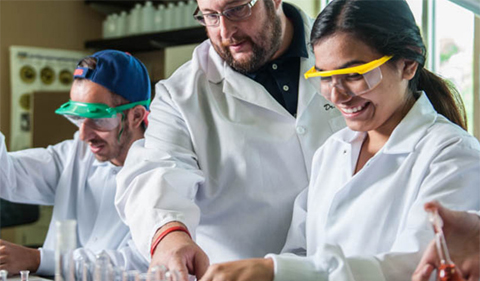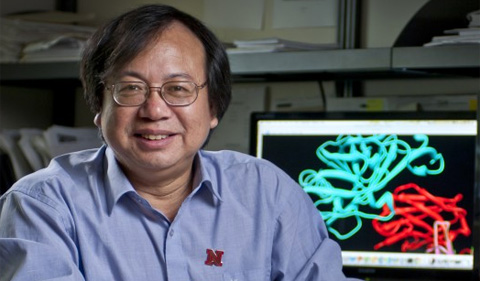Ohio University’s Chemistry and Biochemistry Colloquium Series presents Dr. Jason Keleher on “Strategic Design of a Biomimetic Supramolecular Nanocomposite for “Responsive” Wound Management Applications” on Monday, Feb. 25, at 4:10 p.m. in Clippinger Laboratories 194.
Keleher is Associate Professor and Chair of the Chemistry Department at Lewis University.
The Host is Dr. Travis White
Abstract: Supramolecular nanocomposite materials have emerged as a leading interdisciplinary research area that exploits synergistic relationships at the nanoscale to enhance properties (mechanical and chemical) of next-generation bio-polymeric materials. Hydrogels synthesized from natural biopolymers have emerged due to their intrinsic properties such as non-cytotoxicity and biodegradability as well as their well-defined three-dimensional, non-covalent network that is ideal for modification and functionalization. Therefore, it is critical to develop a mechanistic understanding tailored to the nuances involved in the interactions of the biopolymer scaffold with the functional additives present in these complex matrices. This presentation will discuss the strategic design of hydrogels placing emphasis on the selection of the biopolymer network and the critical role that the incorporation of additives such as biomimetic crosslinking agents (amino acids), organometallic complexes, and antibiotic functionalized nanoparticles have on the properties and responsiveness of the final nanocomposite. It was determined that the incorporation of amino acids and metal ions into an alginate-based hydrogel molecularly alters the pore structure of the network and in turn alters the swelling properties of the nanocomposite. This pore sizetunability is directly correlated with the initial swell rate of the gels due to the inverse relationship between crosslinking density and degree of swell (DOS). The resultant composites have been functionalized with antimicrobial agents such as core-shell metal nanoparticles (AgNPs) to increase antimicrobial activity and enhance the healing process. Initial results based on single-cell epifluorescent measurements have shown that AgNP-hydrogels increase the first-order kinetic rate of cell death due to lysing of the cell. Furthermore, the hydrogel nanocomposite can be layered with a conductive polymer to monitor the changes in DOS due to the diffusion of ions through the gel. As the hydrogel swells in the presence of exudate the ions diffuse from the hydrogel layer into the polyaniline (PANI) conductive layer to enhance electron transport and ultimately produce an electrical response.




















Comments